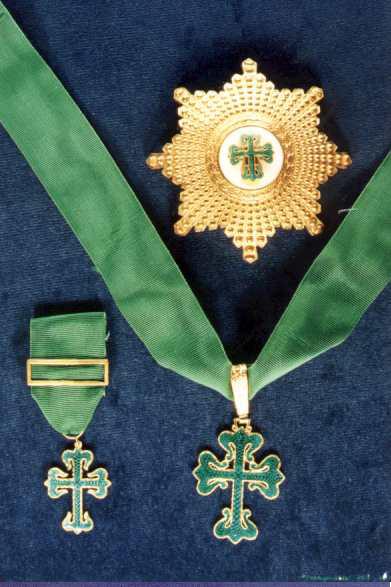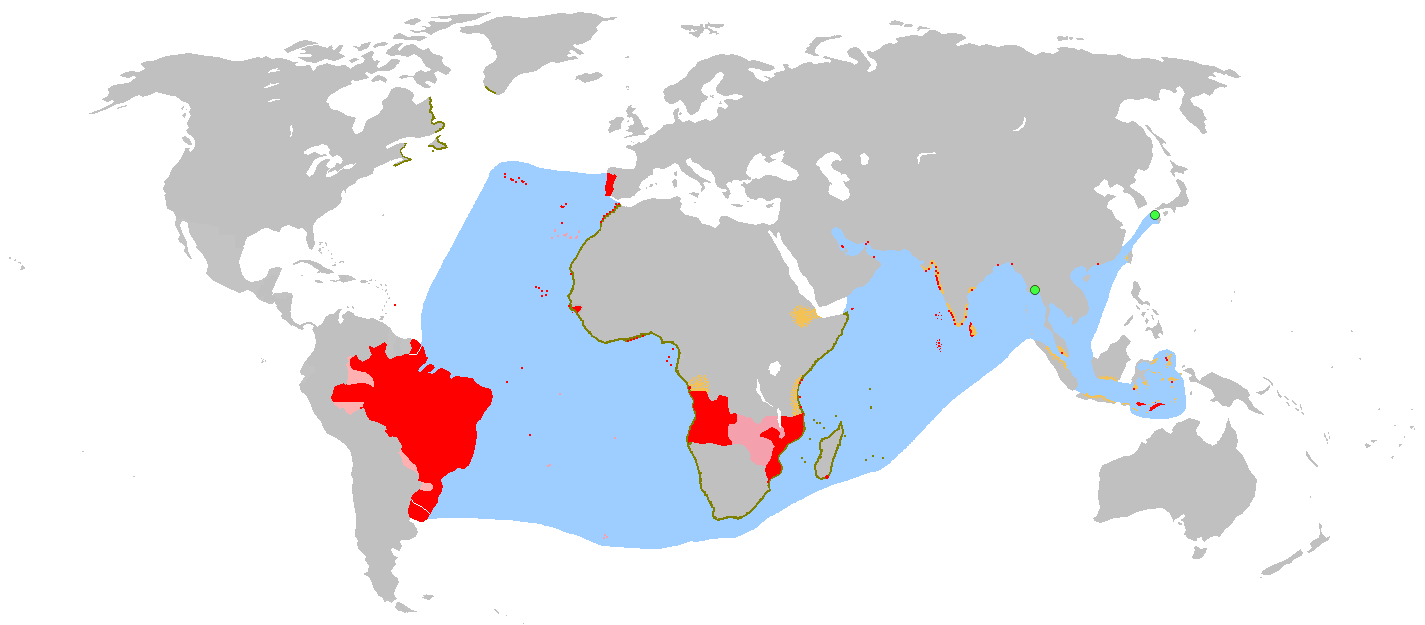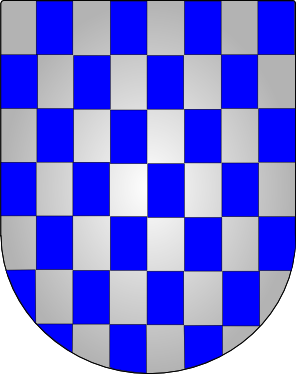|
House Of Aviz
The House of Aviz ( Portuguese: ''Casa de Avis''), also known as the Joanine Dynasty (''Dinastia Joanina''), was a dynasty of Portuguese origin which flourished during the Renaissance and the period of the Portuguese discoveries, when Portugal expanded its power globally. The house was founded by King John I of Portugal, Grand-Master of the Order of Aviz and illegitimate son of King Pedro I (of the Portuguese House of Burgundy), who ascended to the throne after successfully pressing his claim during the 1383–1385 Portuguese interregnum. Aviz monarchs would rule Portugal through the Age of Discovery, establishing Portugal as a global power following the creation of the Portuguese Empire. In 1494, Pope Alexander VI divided the world under the dominion of Portugal and Spain with the Treaty of Tordesillas. The House of Aviz has produced numerous prominent figures in both European and global history, including Prince Henry the Navigator, King Manuel I of Portugal, and H ... [...More Info...] [...Related Items...] OR: [Wikipedia] [Google] [Baidu] |
List Of Portuguese Monarchs
This is a list of Portuguese monarchs who ruled from the establishment of the Kingdom of Portugal, in 1139, to the deposition of the Portuguese monarchy and creation of the Portugal, Portuguese Republic with the 5 October 1910 revolution. Through the nearly 800 years in which Portugal was a monarchy, the kings held various other titles and pretensions. Two kings of Portugal, Ferdinand I and Afonso V, also claimed the crown of Castile. When the House of Habsburg came into power, the kings of Spain, kings of Naples, Naples, and kings of Sicily, Sicily also became kings of Portugal. The House of Braganza brought numerous titles to the Portuguese Crown, including United Kingdom of Portugal, Brazil, and the Algarves, King of Brazil and then ''de jure'' List of monarchs of Brazil, Emperor of Brazil. After the demise of the Portuguese monarchy, in 1910, Portugal almost restored its monarchy in a revolution known as the Monarchy of the North, though the attempted restoration only lasted ... [...More Info...] [...Related Items...] OR: [Wikipedia] [Google] [Baidu] |
House Of Aviz (transparent)
The House of Aviz (Portuguese: ''Casa de Avis''), also known as the Joanine Dynasty (''Dinastia Joanina''), was a dynasty of Portuguese origin which flourished during the Renaissance and the period of the Portuguese discoveries, when Portugal expanded its power globally. The house was founded by King John I of Portugal, Grand-Master of the Order of Aviz and illegitimate son of King Pedro I (of the Portuguese House of Burgundy), who ascended to the throne after successfully pressing his claim during the 1383–1385 Portuguese interregnum. Aviz monarchs would rule Portugal through the Age of Discovery, establishing Portugal as a global power following the creation of the Portuguese Empire. In 1494, Pope Alexander VI divided the world under the dominion of Portugal and Spain with the Treaty of Tordesillas. The House of Aviz has produced numerous prominent figures in both European and global history, including Prince Henry the Navigator, King Manuel I of Portugal, and Holy Roman Em ... [...More Info...] [...Related Items...] OR: [Wikipedia] [Google] [Baidu] |
Henry, King Of Portugal
Henry ( pt, Henrique ; 31 January 1512 — 31 January 1580), dubbed the Chaste ( pt, o Casto, links=no) and the Cardinal-King ( pt, o Cardeal-Rei, links=no), was king of Portugal and a cardinal of the Catholic Church, who ruled Portugal between 1578 and 1580. As a clergyman, he was bound to chastity, and as such, had no children to succeed him, and thus put an end to the reigning House of Aviz. His death led to the Portuguese succession crisis of 1580 and ultimately to the 60-year Iberian Union that saw Portugal share a monarch with that of Habsburg Spain. The next independent monarch of Portugal would be John IV, who restored the throne after 60 years of Spanish rule. Life Born in Lisbon, Henry was the fifth son of King Manuel I of Portugal and Maria of Aragon. Cardinal As the younger brother of King John III of Portugal and a younger son in the Royal Family, Henry was not expected to succeed to the Portuguese throne. Early in his life, Henry took Holy Orders to promo ... [...More Info...] [...Related Items...] OR: [Wikipedia] [Google] [Baidu] |
Peter I Of Portugal
Peter I (Portuguese: ''Pedro I'', ; 8 April 1320 – 18 January 1367), called the Just (''o Justiceiro'') or the Cruel (''o Cruel''), was King of Portugal from 1357 until his death. He was the third but only surviving son of Afonso IV of Portugal and his wife, Beatrice of Castile. Early life In 1328, Peter's father, Afonso IV arranged for the marriage of his eldest daughter, Maria, to Alfonso XI of Castile. However, soon after their marriage Alfonso began a long affair with the beautiful and newly widowed Leonor de Guzman. Maria bore Alfonso a son in 1334, who ultimately became Peter of Castile, but after the Castilian king refused to end his affair Maria returned home to Portugal in 1335. Alfonso had been married once before, to his cousin's daughter, Constanza Manuel (granddaughter of James II of Aragon). Alfonso had the marriage annulled in 1327, after only two years, to clear the way for marriage to Maria. This angered his cousin Juan Manuel, Prince of Villena, a pow ... [...More Info...] [...Related Items...] OR: [Wikipedia] [Google] [Baidu] |
Order Of Aviz
The Military Order of Saint Benedict of Aviz ( pt, Ordem Militar de São Bento de Avis, ), previously to 1910 ''Royal Military Order of Saint Benedict of Aviz'' ( pt, Real Ordem Militar de São Bento de Avis), previously to 1789 ''Knights'' (of the ''Order) of Saint Benedict of Aviz'' ( pt, Ordem de São Bento de Aviz) or ''Friars of Santa Maria of Évora'', is a Portuguese order of chivalry, founded in Portugal in 1146. It gave its name and coat of arms to the Aviz Dynasty that ruled Portugal between 1385 and 1580. Early history The order, as a monastic military order, was founded in emulation of such military orders as the Knights Templar, which existed in Portugal as early as 1128, and received a grant from Theresa, Countess of Portugal in the year of the Council of Troyes, which confirmed their early statutes. A native order of this kind sprang up in Portugal about 1146. Afonso, the first king, gave to it the town of Évora, captured from the Moors in 1166, and the Knight ... [...More Info...] [...Related Items...] OR: [Wikipedia] [Google] [Baidu] |
History Of Portugal (1415–1578)
The history of the Kingdom of Portugal from the Illustrious Generation of the early 15th century to the fall of the House of Aviz in the late 16th century has been named the "Portuguese golden age" ( Portuguese: ''Século de Ouro''; "golden century") and the "Portuguese Renaissance". During this period, Portugal was the first European power to begin building a colonial empire as Portuguese sailors and explorers discovered an eastern route to India (that rounded the Cape of Good Hope) as well as several Atlantic archipelagos (like the Azores, Madeira, and Cape Verde) and colonized the African coast and Brazil. They also explored the Indian Ocean and established trading routes throughout most of southern Asia, sending the first direct European maritime trade and diplomatic missions to Ming China and to Japan, at the same time installing trading posts and the most important colony: Portuguese Macau (Only in East Asia). The Portuguese Renaissance produced a plethora of poet ... [...More Info...] [...Related Items...] OR: [Wikipedia] [Google] [Baidu] |
Portuguese Discoveries
Portuguese maritime exploration resulted in the numerous territories and maritime routes recorded by the Portuguese as a result of their intensive maritime journeys during the 15th and 16th centuries. Portuguese sailors were at the vanguard of European exploration, chronicling and mapping the coasts of Africa and Asia, then known as the East Indies, and Canada and Brazil (the West Indies), in what came to be known as the Age of Discovery. Methodical expeditions started in 1419 along West Africa's coast under the sponsorship of prince Henry the Navigator, with Bartolomeu Dias reaching the Cape of Good Hope and entering the Indian Ocean in 1488. Ten years later, in 1498, Vasco da Gama led the first fleet around Africa to India, arriving in Kozhikode, Calicut and starting a maritime route from Portugal to India. Portuguese explorations then proceeded to southeast Asia, where they reached Japan in 1542, forty-four years after their first arrival in India. In 1500, the Portuguese nob ... [...More Info...] [...Related Items...] OR: [Wikipedia] [Google] [Baidu] |
Portuguese Renaissance
The Portuguese Renaissance refers to the cultural and artistic movement in Portugal during the 15th and 16th centuries. Though the movement coincided with the Spanish and Italian Renaissances, the Portuguese Renaissance was largely separate from other European Renaissances and instead was extremely important in opening Europe to the unknown and bringing a more worldly view to those European Renaissances, as at the time the Portuguese Empire spanned the globe. As the pioneer of the Age of Discoveries, Portugal flourished in the 15th, 16th, and 17th centuries, with voyages to India, the Orient, the Americas, and Africa. This immense trade network would create an extremely wealthy Portuguese nobility and monarchy, that would become patrons for an immense flourishing of culture, arts, and technology in Portugal and all over the world. Context Diplomats, merchants, students, humanists, scholars, and artists, from all over Europe, were drawn to Portugal during its Renaissance. The ... [...More Info...] [...Related Items...] OR: [Wikipedia] [Google] [Baidu] |
Portuguese People
The Portuguese people () are a Romance nation and ethnic group indigenous to Portugal who share a common culture, ancestry and language. The Portuguese people's heritage largely derives from the pre-Celts, Proto-Celts ( Lusitanians, Conii) and Celts ( Gallaecians, Turduli and Celtici), who were Romanized after the conquest of the region by the ancient Romans. A small number of male lineages descend from Germanic tribes who arrived after the Roman period as ruling elites, including the Suebi, Buri, Hasdingi Vandals, Visigoths with the highest incidence occurring in northern and central Portugal. The pastoral Caucasus' Alans left small traces in a few central-southern areas. Finally, the Umayyad conquest of Iberia also left Jewish, Moorish and Saqaliba genetic contributions, particularly in the south of the country. The Roman Republic conquered the Iberian Peninsula during the 2nd and 1st centuries B.C. from the extensive maritime empire of Carthage during the s ... [...More Info...] [...Related Items...] OR: [Wikipedia] [Google] [Baidu] |
Portuguese Language
Portuguese ( or, in full, ) is a western Romance language of the Indo-European language family, originating in the Iberian Peninsula of Europe. It is an official language of Portugal, Brazil, Cape Verde, Angola, Mozambique, Guinea-Bissau and São Tomé and Príncipe, while having co-official language status in East Timor, Equatorial Guinea, and Macau. A Portuguese-speaking person or nation is referred to as "Lusophone" (). As the result of expansion during colonial times, a cultural presence of Portuguese speakers is also found around the world. Portuguese is part of the Ibero-Romance group that evolved from several dialects of Vulgar Latin in the medieval Kingdom of Galicia and the County of Portugal, and has kept some Celtic phonology in its lexicon. With approximately 250 million native speakers and 24 million L2 (second language) speakers, Portuguese has approximately 274 million total speakers. It is usually listed as the sixth-most spoken language, the third-mos ... [...More Info...] [...Related Items...] OR: [Wikipedia] [Google] [Baidu] |
House Of Abrantes
The House of Abrantes (Portuguese: ''Casa de Abrantes'') descends from the ancient and noble Almeida family. King Afonso V granted the land around Abrantes to his cousin, Lopo de Almeida, 1st Count of Abrantes in 1476. The title and lands descended in the Almeida family until 1650 when its male line expired and the estate reverted to the Crown. The estate and noble title were granted to the Sá family, Counts of Penaguião in 1718 and devolved via the Lancastres, Counts of Vila Nova, now represented by the ''Lancastre e Távora'' branch of the family. The Counts of Abrantes In 1476, King Afonso V of Portugal granted Dom Lopo de Almeida, a descendant of King Pedro I of Portugal through an illegitimate line, the title of Count of Abrantes, which became extinct when Dom Miguel de Almeida, 4th Count of Abrantes and a Restoration hero, died without issue. When Isabel de Mendonça, the Count of Abrantes’ heir, married João Rodrigues de Sá, 1st Count of Penaguião, the C ... [...More Info...] [...Related Items...] OR: [Wikipedia] [Google] [Baidu] |
Marquess Of Lavradio
Marquess of Lavradio is a Portuguese title of nobility created by Letters Patent of King José I of Portugal on 18 October 1753 for D. António de Almeida Soares de Portugal, 1st Count of Lavradio and 4th Count of Avintes. Titles and Honours The first Marquess of Lavradio was a prominent statesman and the head of an established noble family. In his own right, he was the 4th Count of Avintes, and 8th Lord of Avintes, also Portuguese titles of nobility. In gratitude for the exceptional services to his country of his uncle D.br>Tomás de Almeida 1st Cardinal Patriarch of Lisbon, on 12 January 1714 King John V of Portugal conferred on him the Seigniory of Lavradio, and the title of Count of Lavradio, in perpetuity, confirmed by Letters Patent of 4 June 1725, as well as adding to his commanderies in the Order of Christ. The first Marquess held key administrative positions under kings João V of Portugal and José I of Portugal, notably as 38th Governor General of Angola, fro ... [...More Info...] [...Related Items...] OR: [Wikipedia] [Google] [Baidu] |
.png)
.png)






